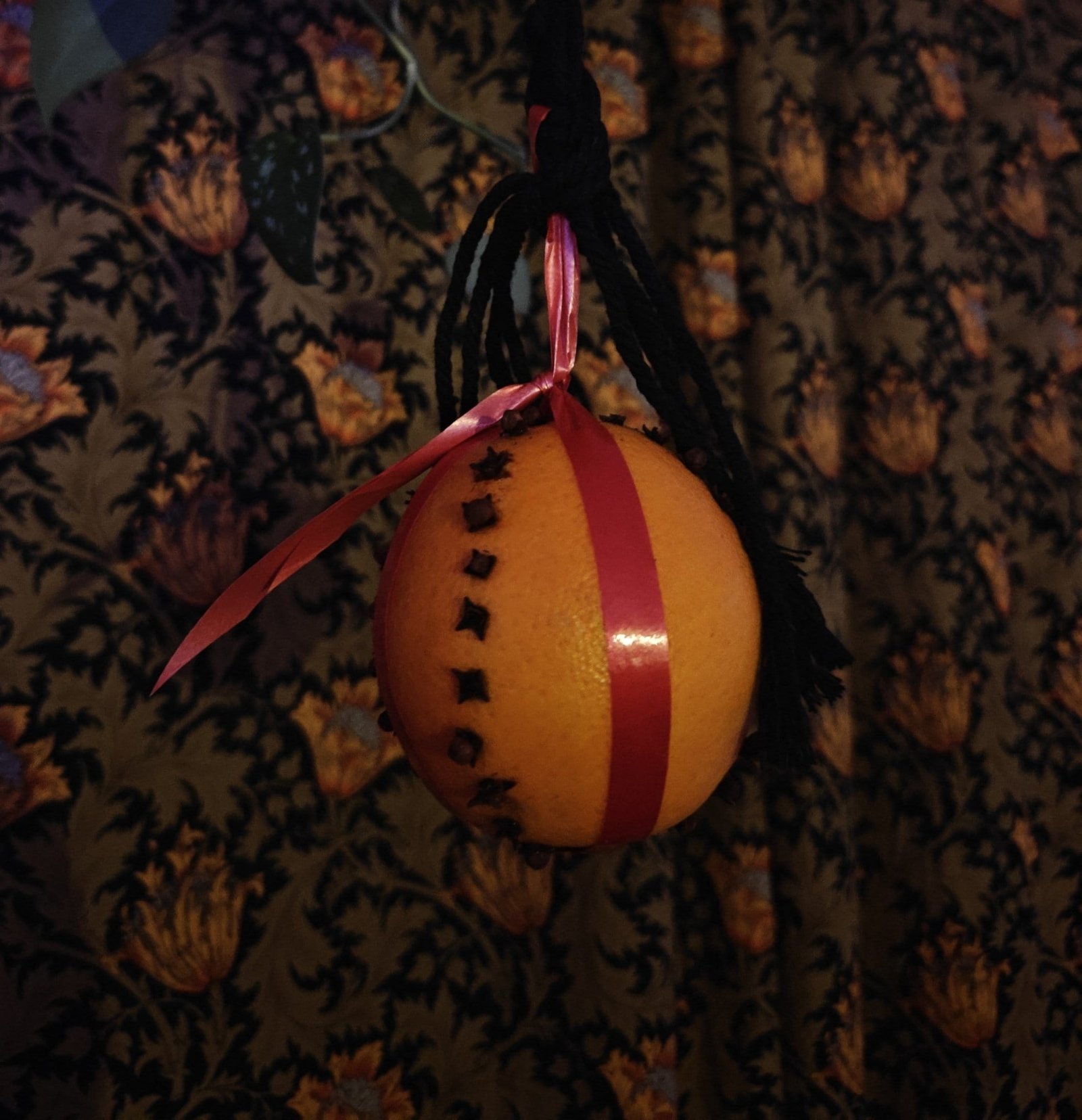Yule Calendar Day 8: The History and Making of Clove-Studded Oranges (Pomanders)
Pomanders, clove-studded oranges, have a long and fragrant history that stretches back to medieval Europe. Originally, pomanders were small, aromatic balls made with spices and herbs encased in metals or fabrics, carried for protection against disease or to mask unpleasant smells. Over time, this evolved into the use of clove-studded fruits, particularly oranges, as a symbol of abundance, health, and prosperity. In the winter months, when fresh scents were rare, pomanders became a popular way to bring warmth and fragrance indoors, especially during holiday seasons like Yule and Christmas. Today, pomanders are cherished not only for their beauty and fragrance but also as a traditional craft that adds a personal, handmade touch to holiday decor.
How to Make a Pomander
To make a pomander, you’ll need fresh oranges (or other citrus fruits like lemons or limes) and 1–2 bags of whole cloves. The process is simple and allows for endless creativity in decorating the fruit.
Instructions
Prepare the Orange: Take a fresh orange and decide on a design. You can divide the orange into sections or create patterns with cloves, such as stripes, stars, or spirals. If you prefer, you can use a toothpick to pre-poke small holes for easier clove placement, but the cloves can also be pushed through the peel directly without pre-poking.
Stud the Orange with Cloves: Insert the cloves into the orange in your desired pattern. The more cloves you use, the stronger the scent will be. Traditional designs often leave some orange peel visible, creating a beautiful contrast between the orange and the dark cloves.
Drying for Longevity: If you want your pomander to last longer (for example, throughout the holiday season), fill the orange completely with cloves and squeeze out a bit of the juice, which helps it dry out and prevents molding. A fully clove-covered orange will dry naturally over time, creating a long-lasting ornament with a delightful scent.
Adding a Ribbon: If you’d like to hang your pomander, attach a ribbon or twine around the orange before inserting the cloves. Cross the ribbon around the fruit, securing it with a knot at the top, and create a loop for hanging. Use breathable material for the ribbon!
Intentions and Personalization: As you decorate the orange, focus on positive thoughts for the person who will receive it, if you’re gifting it. This small act of intention can make the pomander feel even more special and meaningful.
Why Pomanders Are Made This Way
Studding an orange with cloves is more than just a holiday craft. The cloves act as a natural preservative, helping the orange dry slowly rather than rot, which is why a fully covered orange can last so long. The scent of cloves mixed with citrus is also believed to have protective qualities, warding off negative energy and bringing a sense of warmth and prosperity into the home.
Pomanders are often used as seasonal decorations, filling rooms with their spicy, sweet fragrance. This combination of scent and symbolism makes pomanders a meaningful addition to winter celebrations, offering a sense of tradition, warmth, and connection to the natural world.

